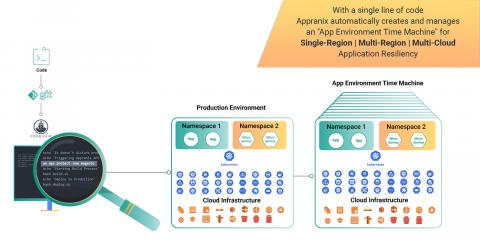Operations | Monitoring | ITSM | DevOps | Cloud
DevOps
The latest News and Information on DevOps, CI/CD, Automation and related technologies.
What if I called FLUSHALL on your Redis instance?
At Honeybadger, we use Redis a lot. It's our Swiss Army Knife; it's a cache, a single source of truth, it stores background jobs, and more. Basically, Redis is one of those services that should never fail. I was pondering the DevOps apocalypse recently, as one does (could Redis be one of the four horsemen?), which led me to jump into our #ops channel to ask Ben a simple question: what are the risks if someone executed flushall on our redis instances?
Code Commits: only half the story
It’s not the first time I’ve been asked by a sales rep the following question: “The customer has looked at Stackalytics and is wondering why Rancher doesn’t have as many code commits as the competition. What do I say?” For those of you unfamiliar with Stackalytics, it provides an activity snapshot, a developer selfie if you will, of commits and lines of code changed in different open source projects.
D2iQ: Your Partner in the Cloud Native Journey
D2iQ: A Smarter Approach to Day 2 Operations
How to clone an Azure VM
If you ever need to duplicate or clone your Azure VMs or perhaps even migrate your Azure VMs from Azure Service Manager (ASM) to Azure Resource Manager (ARM) you can use one of our Azure Management Tools, Azure VM Cloner (AVMC) to quickly and easily do this for you.
Extend CI/CD with CR for Continuous App Resilience
The radical shift towards DevOps and the continuous everything movement have changed how organizations develop and deploy software. As the consolidation and standardization of continuous integration and continuous delivery (CI/CD) processes and tools occur in the enterprise, a standardized DevOps model helps organizations deliver faster software functionality at a large scale.
Treading in Haunted Graveyards
At Honeycomb, we’ve often discussed the value of making software deployments early and often, and being able to understand your code as it runs in production. However, these principles aren’t specific to only your customer-facing software. Configuration-as-code, such as Terraform, is in fact code that needs to go through a release process as well. Lacking formal process around Terraform deployment means a de-facto process that generates reliability risk.
SREs can help Transform Enterprise IT
Transformation of IT Ops When I think of the term IT Ops I immediately think of Enterprise IT and the traditional attributes that make up this function – many of which are in the middle of an industry-wide disruption – and its associated impact. At LinkedIn, when we first looked at business process support, shadow IT and non-accounted-for IT spend, about 10 years ago, it was a bit of a revelation to me how the landscape had already changed by then.











